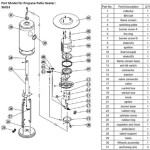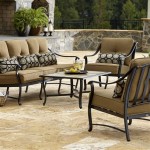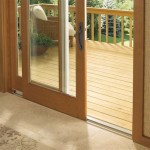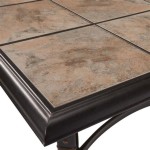Plastic Covers For Patio Cushions: Protection and Longevity
Protecting outdoor furniture cushions from the elements is critical for maintaining their aesthetic appeal and extending their lifespan. Patio cushions, often made from absorbent materials, are susceptible to damage from rain, sun, dirt, and pests. One common and effective solution for mitigating this risk is the use of plastic covers. These covers provide a barrier against environmental factors, preserving the condition of the cushions and reducing the need for frequent cleaning or replacement.
The market offers a wide variety of plastic covers designed specifically for patio cushions. These range in material, thickness, design, and intended use, catering to diverse needs and budgets. Understanding the different types of plastic covers and their respective benefits is essential for making an informed purchasing decision that optimizes protection and value.
Choosing the right plastic cover involves considering factors such as the local climate, the frequency of outdoor use, and the type of cushion material. A comprehensive understanding of these factors will contribute to the selection of a cover that provides adequate protection without compromising comfort or ease of use. Furthermore, proper installation and maintenance of the plastic cover are crucial for maximizing its effectiveness and longevity.
Key Considerations When Selecting Plastic Covers
Selecting the appropriate plastic cover involves a careful evaluation of several factors to ensure optimal protection and longevity for patio cushions. These considerations include material type, size and fit, and ventilation capabilities. Each of these elements contributes significantly to the cover's effectiveness in safeguarding cushions from environmental damage.
The material of the plastic cover directly impacts its durability and ability to withstand different weather conditions. Common materials include polyethylene, polypropylene, and PVC. Polyethylene is a lightweight and relatively inexpensive option, suitable for basic protection against dust and light rain. Polypropylene offers increased strength and resistance to tearing, making it a better choice for areas with moderate weather conditions. PVC, or polyvinyl chloride, is the most durable and waterproof option, providing superior protection against heavy rain, snow, and UV radiation. The choice of material should align with the local climate and the level of protection required.
The size and fit of the cover are equally important. A cover that is too small will not provide adequate coverage, leaving portions of the cushion exposed to the elements. Conversely, a cover that is too large can trap moisture and create a breeding ground for mold and mildew. Accurate measurements of the cushions are necessary to ensure a snug and secure fit. Some covers come with adjustable straps or closures to further customize the fit and prevent the cover from being blown away by wind.
Ventilation is another critical consideration. Plastic covers, by their nature, can trap moisture and humidity, which can lead to the growth of mold, mildew, and unpleasant odors. Covers with ventilation features, such as mesh panels or breathable membranes, allow air to circulate, reducing the risk of moisture buildup. Choosing a cover with adequate ventilation is particularly important in humid climates or for cushions made from absorbent materials.
Benefits of Using Plastic Covers
Employing plastic covers for patio cushions offers numerous advantages, primarily focused on protecting the cushions from various environmental factors and extending their overall lifespan. These benefits translate into cost savings, reduced maintenance, and enhanced aesthetic appeal of outdoor furniture.
One of the most significant benefits is protection from water damage. Rain, snow, and humidity can penetrate cushion fabrics, leading to water stains, mold growth, and deterioration of the filling material. Plastic covers create a waterproof barrier, preventing water from seeping into the cushions and causing damage. This is particularly important for cushions made from foam or other absorbent materials that can take a long time to dry, leading to prolonged exposure to moisture.
Protection from UV radiation is another crucial benefit. Prolonged exposure to sunlight can cause fading, discoloration, and weakening of cushion fabrics. UV-resistant plastic covers block harmful UV rays, preserving the color and integrity of the cushions. This is especially important for cushions made from brightly colored or delicate fabrics that are more susceptible to sun damage. By preventing UV degradation, plastic covers help maintain the aesthetic appeal of the cushions for longer.
Plastic covers also provide protection from dirt, dust, and pests. Outdoor environments are often filled with airborne particles that can settle on cushions, causing stains and requiring frequent cleaning. Pests, such as insects and rodents, can also damage cushions by chewing on the fabric or nesting inside. Plastic covers create a barrier that prevents dirt and pests from reaching the cushions, reducing the need for cleaning and preventing damage. This is particularly beneficial for cushions that are stored outdoors for extended periods.
In addition to these direct benefits, plastic covers can also simplify maintenance. Cushions that are protected by covers require less frequent cleaning, reducing the time and effort required to maintain outdoor furniture. The covers themselves are typically easy to clean, requiring only a wipe-down with a damp cloth. By reducing the need for cleaning and preventing damage, plastic covers contribute to the long-term cost-effectiveness of outdoor furniture ownership.
Types of Plastic Cover Materials: A Comparative Analysis
The effectiveness of plastic covers in protecting patio cushions relies heavily on the type of plastic material used in their construction. Different plastics offer varying degrees of durability, water resistance, UV protection, and breathability. Understanding the characteristics of each material is essential for selecting the appropriate cover for specific needs and environmental conditions. This section provides a comparative analysis of commonly used plastic materials for patio cushion covers.
Polyethylene (PE) is a widely used plastic known for its affordability and flexibility. It offers basic protection against dust and light rain, making it suitable for temporary or short-term use. However, polyethylene is relatively thin and susceptible to tearing, particularly in windy conditions or with prolonged exposure to sunlight. It also lacks UV resistance, which can lead to degradation and discoloration over time. While polyethylene covers are a cost-effective option for occasional use, they may not be the best choice for long-term protection in harsh weather conditions.
Polypropylene (PP) is a stronger and more durable plastic compared to polyethylene. It offers better resistance to tearing and abrasion, making it a suitable option for areas with moderate weather conditions. Polypropylene also has some level of UV resistance, although it is not as effective as specialized UV-resistant materials. Polypropylene covers are often slightly more expensive than polyethylene covers but offer a longer lifespan and better overall protection. They are a good choice for users who need a balance between affordability and durability.
Polyvinyl Chloride (PVC), often referred to as vinyl, is a highly durable and waterproof plastic. It provides excellent protection against heavy rain, snow, and UV radiation. PVC covers are typically thicker and more resistant to tearing than polyethylene or polypropylene covers. They are also relatively easy to clean and maintain. However, PVC is less breathable than other plastics, which can lead to moisture buildup and the growth of mold and mildew if not properly ventilated. PVC covers are a premium option that provides superior protection but may require additional ventilation features to prevent moisture-related issues.
In addition to these common plastics, some covers are made from specialized materials such as UV-resistant polyethylene or breathable PVC. UV-resistant polyethylene offers enhanced protection against sun damage, while breathable PVC allows air to circulate, reducing the risk of moisture buildup. These specialized materials offer improved performance compared to standard plastics but may also come at a higher cost. The choice of material should depend on the specific needs and priorities of the user, taking into account factors such as climate, budget, and desired level of protection.

Easy Diy Outdoor Cushion Covers Cushions Furniture

Waterproof Plastic Sofa Cover For Storage And Moving 134 X 46 Dust Proof Couch Indoor Outdoor Patio Furniture Chair Made In Com

Diampnd America Heavy Plastic Sheet Outdoor Sofa Set Table Chair 20ft X 15ft Cover Free Size Buy

Plain Outdoor Tarpaulin Furniture Covers

Eismodra Plastic Couch Covers For Moving Waterproof Outdoor Patio Furniture Cover Protector Christmas Tree Storage Bag Sectional Sofa Bed Pets Dogs L In 2024

Tropitone Replacement Cushions Outdoor Protective Furniture Covers Collection

Plastic Chair Cover For Moving And Storage 46 76 Furniture Indoor Outdoor Patio Price Made In Com

How To Take Care Of Your Outdoor Furniture The Cover Blog

Buy Protective Patio Furniture Covers For Outdoor Indoor

Grey Tarpaulin Sofa Cover








